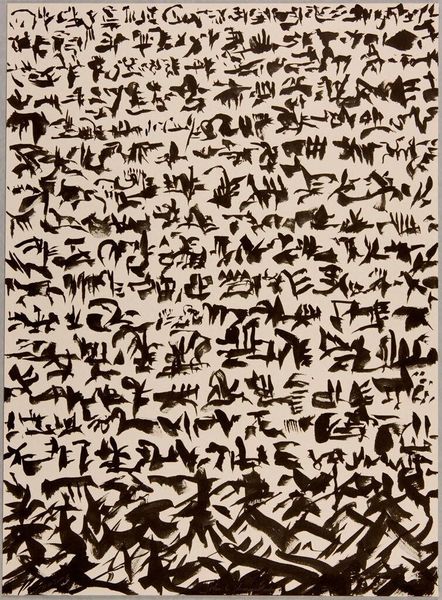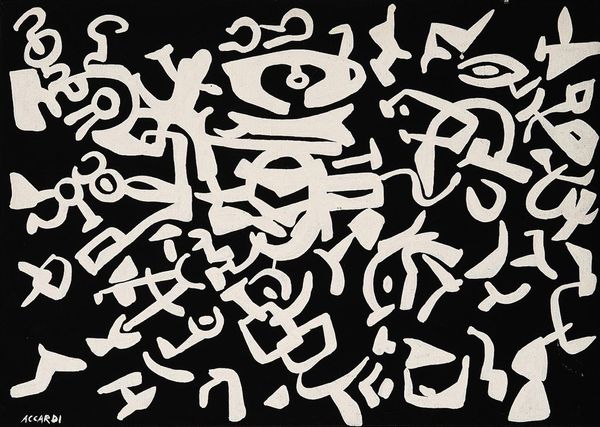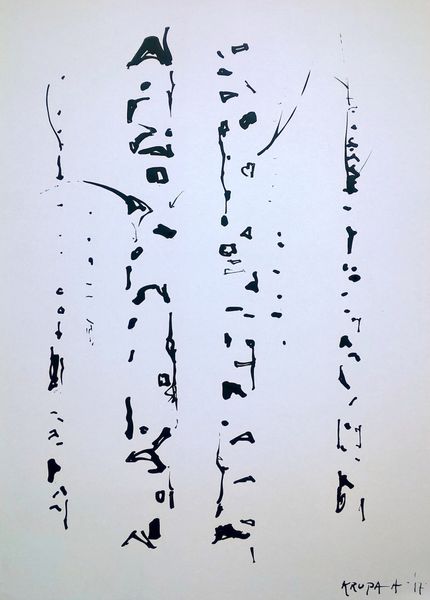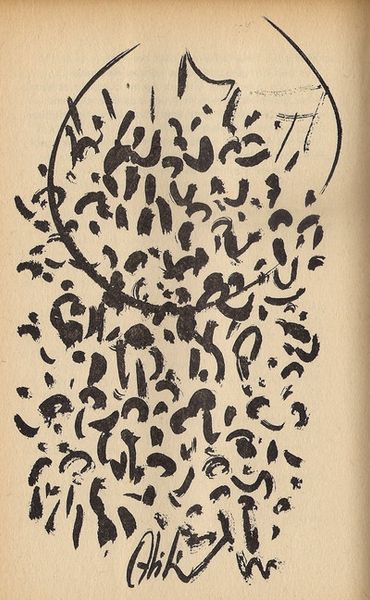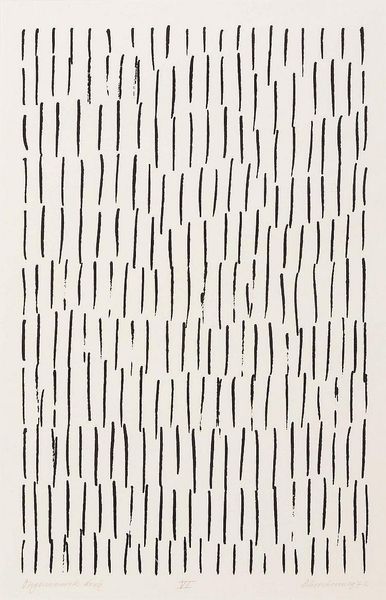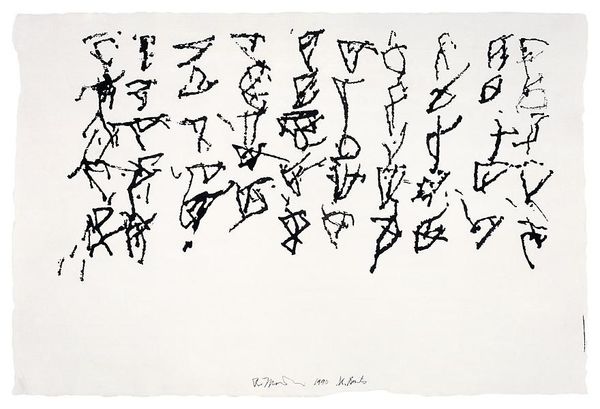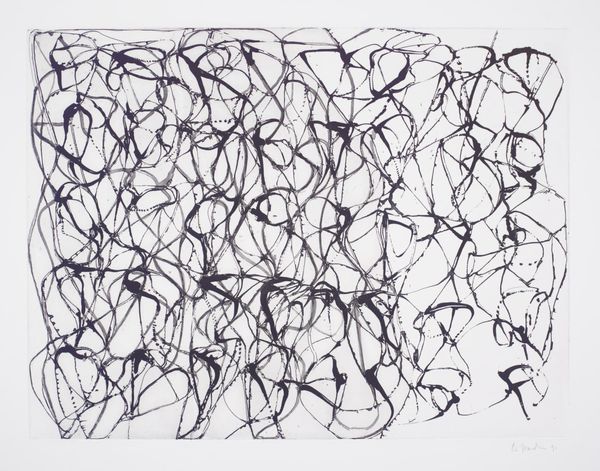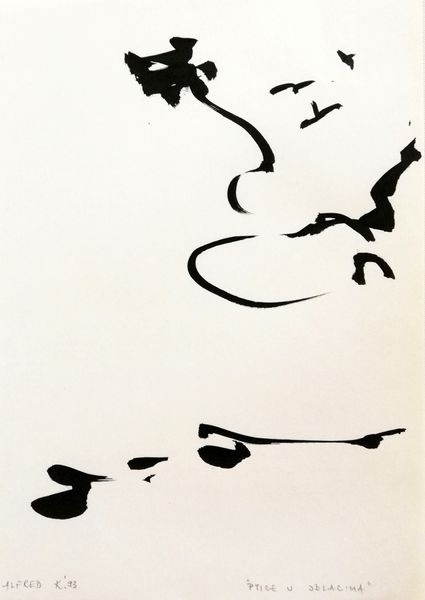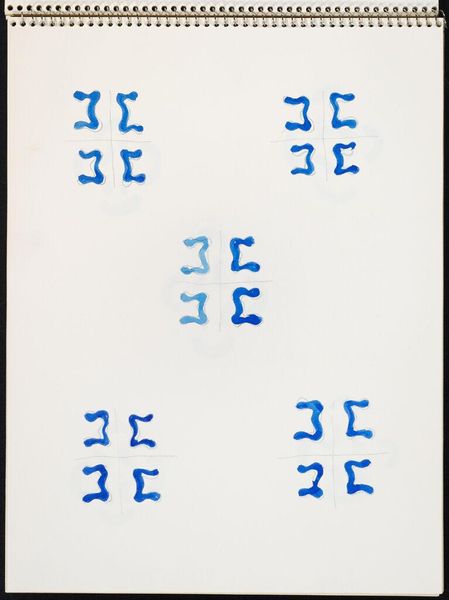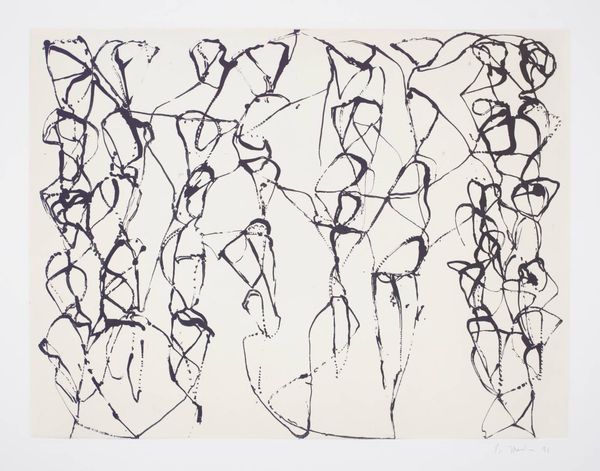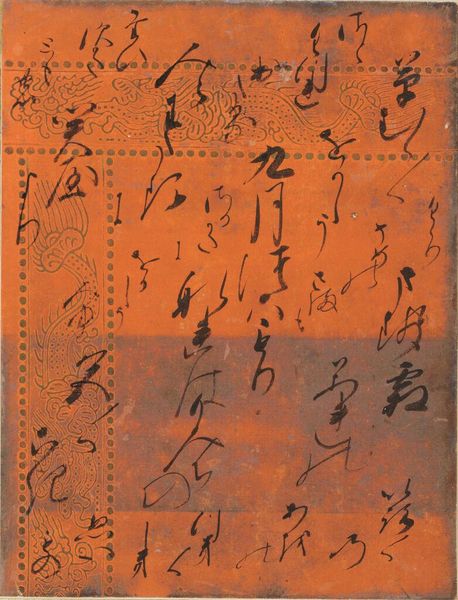
drawing, ink
#
drawing
#
ink
#
orientalism
#
abstraction
#
line
#
calligraphy
Copyright: Brion Gysin,Fair Use
Curator: Looking at "Marrakech," made by Brion Gysin, I feel instantly transported somewhere beyond words—into the realm of pure, rhythmic experience. Editor: Immediately I'm struck by the repetitive nature of the forms. There's a distinct linearity in the horizontal arrangement, almost like musical notation on a staff. We’re looking at black ink, quite graphic, on what I assume is a white ground. The marks resolve into an ambiguous abstraction that hints at calligraphy, yet with no discernible semantic value. Curator: Yes, exactly! It's less about meaning and more about vibration. Gysin, fascinated by language and ritual, creates this potent field of energy. This reminds me of how he and William Burroughs messed with language in their cut-up experiments. It's almost like seeing thoughts before they're formed, swirling, connecting. Editor: Semiotically speaking, each stroke operates like a signifier, floating free of a signified. We’re left in a linguistic limbo. Is it possible these calligraphic figures index a personal system of symbolic language rather than cultural language in general? The orientalist style references Eastern aesthetics, perhaps drawing inspiration from Arabic or East Asian script, while staying resolutely abstract. Curator: Gysin soaked up inspiration wherever he found it! His journeys certainly fueled this visual language. I imagine wandering through bustling markets, vibrant colors assaulting the senses, then distilling that sensory overload into the essential strokes. It’s his response, and it has that raw feeling of direct translation onto the paper. The overall impact feels dreamlike and disorienting, but grounded. Editor: Grounded indeed. There's a compelling materiality in the way the ink pools and dries, demonstrating both control and chance in the mark-making process. Despite its gestural freedom, “Marrakech” also holds an unexpected formal constraint: its commitment to horizontal linearity and the density of characters, all contributing to the rhythmic unity you mention. Curator: Rhythm indeed. A rhythm both hypnotic and a little mischievous. To me, this artwork embodies how abstraction is, paradoxically, its own form of raw honesty, capable of getting beneath our layers of habits. Editor: Indeed, it’s an art that reveals while obscuring.
Comments
No comments
Be the first to comment and join the conversation on the ultimate creative platform.
